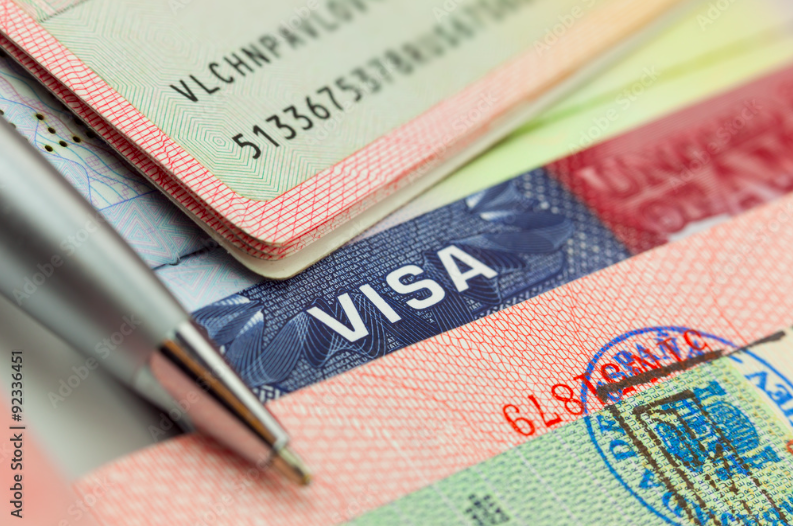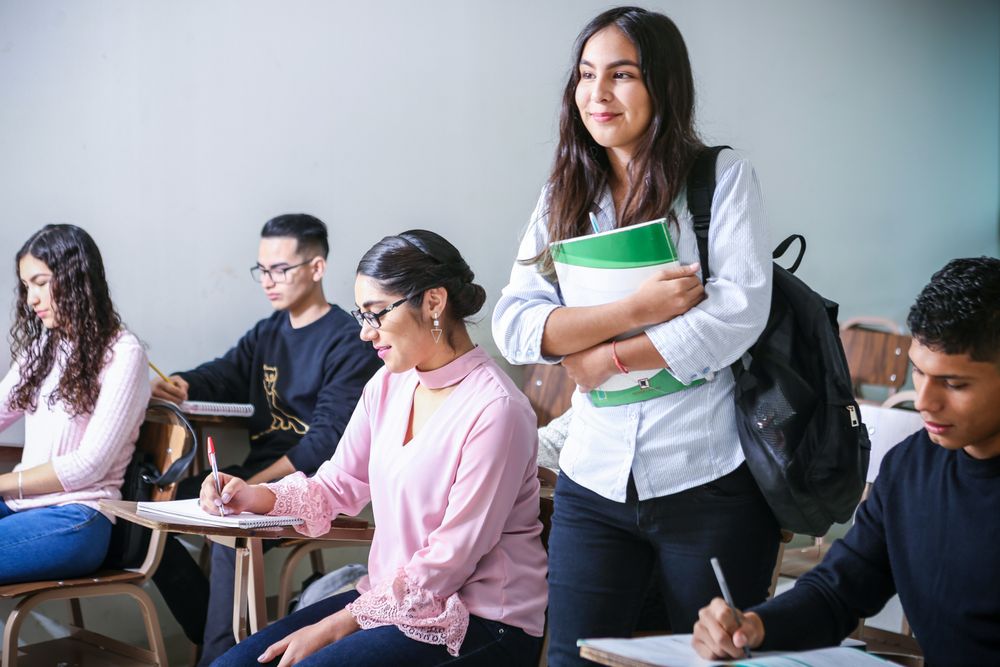The US Embassy set a new all-time high record by accepting over 140,000 student visas in 2023. This points to the growing trend of Indian students opting for higher education opportunities in the United States.
But the question that arises is, is it easy to get a US student visa?
The process is simple but quite thorough and requires patience. Even more important is to get it right in the first go so that your application is not denied and you do not waste any time re-applying.
This detailed guide will help you with the application process, providing insights and tips to increase your chances of successfully obtaining a US student visa.
What are the Different Types of US Student Visas?
Selecting the right visa based on your eligibility and requirements is important. These are the three major US visa types that most students opt for:
F1 US Student Visa
This is one of the most popular and sought-after visas by Indian students. A student should apply for this visa when their course requires more than 18 hours of study every week. This visa mostly covers all the undergraduate courses and graduate programs in the fields of computer science and engineering, STEM fields, social sciences etc.
If an F1 visa applicant has a spouse or children, they can apply for an F-2 visa, which allows them to accompany the recipient but does not allow them to work.
J-1 Exchange Student Visa
The J-1 Visa is tailored for educational and cultural exchange program participants, accommodating a diverse group that includes college and university students.
The J-1 Visa is especially beneficial for those interested in short-term study programs, internships, or residency programs linked to exchange initiatives. It offers participants a chance to experience cultural exchanges and access a wide array of programs, from internships to traineeships.
M-1 Vocational or Non-Academic Visa
This US visa type is reserved for technical or vocational training in areas such as cooking, cosmetology, automotive repair, aviation etc. These visas come with a prior time stamp. This means students cannot overstay their visit on completion of their vocational training.
If you are confused regarding which visa option is right for you and need counselling to help you select the right one with expert help you can always reach out to experienced professionals at Zolve.
What are the Documents Required for a US Student Visa?
Here is a comprehensive list of the various academic, financial and visa documents that you should arrange and collect to ensure you meet all the requirements during different stages of your visa application process:
List of Academic Documents:
- High school academic transcripts
- Bachelor's degree (if applicable)
- University/college acceptance letter
- Proof of English language proficiency (e.g., IELTS, TOEFL, PTE)
- Standardized test scores (e.g., ACT, SAT, GMAT, GRE)
- Provisional certificates
- Letters of Recommendation (LORs) and Statement of Purpose (SOPs)
- Proof of work experience (if applicable)
List of Financial Documents:
- Bank statements as proof of funds for the I-20
- Salary slips and employment verification letter
- Sponsorship letter (if provided)
- Tax returns from the past three years
- Approval letter for any loans (if applicable)
- Statement from a certified accountant (CA)
- Scholarship award letter (if applicable)
List of Visa Documents:
- Current and valid passport
- Printed copy of the DS-160 form
- Original and photocopy of the interview appointment letter
- Receipt showing payment of the SEVIS fee
- Form I-20 issued by the university or college
- Confirmation of payment for the visa application fee
What is the Cost of US Student Visa Application?
Once you have all the documents in place, the next step is understanding the cost associated with different visa types. Here is the fee that you will have to pay depending on the visa you apply for:
Cost Component | F-1 Visa | J-1 Visa | M-1 Visa |
Fee required for SEVIS | 350 USD | 220 USD | 350 USD |
Application fee for visa | 160 USD | 160 USD | 160 USD |
Issuance fee for visa | Variable | Variable | Variable |
Steps for Applying for a US Student Visa
Here is a step-by-step guide to applying for your US student visa.
- Receive the I-20 form: Once accepted by your university or college in the US, you'll receive the I-20 form, a crucial document for your visa application.
- Pay the SEVIS fee: Before initiating your USA student visa process, ensure to pay the SEVIS fee. This fee is a mandatory part of the visa application process.
- Obtain the SEVIS fee receipt and complete the DS-160 form: After paying the SEVIS fee, obtain the receipt. Proceed by filling out the DS-160 visa application form online. This comprehensive form gathers essential information for your visa application. If you're unsure about filling out the DS-160 form, contact the Zolve team for expert form reviews and personalized form-filling support.
- Pay the visa application fee: Following completion of the DS-160 form, proceed to pay the visa application fee. This fee is required to process your visa application.
- Schedule biometrics and visa interview: Book appointments for both your biometrics and US visa interview. Biometrics capture your fingerprints and photo, while the interview is a crucial step in the visa application process. During the interview, be prepared to discuss your study plans and demonstrate your eligibility for a student visa.
- Prepare supporting documents: Gather all necessary supporting documents, including your passport, I-20 form, SEVIS fee receipt, DS-160 confirmation, visa application fee payment receipt, academic transcripts, financial documentation, and any additional required paperwork.
- Attend biometrics appointment and visa interview: Attend your scheduled biometrics appointment to provide your fingerprints and photo. Then, attend your visa interview at the US embassy or consulate. Be honest, confident, and prepared to discuss your intentions to study in the US.
Conclusion
Obtaining a US student visa involves understanding the requirements, costs, and application process. By adhering to the guidelines outlined in this comprehensive guide, you can smoothly navigate your US visa application process and embark on a rewarding educational journey.
And Zolve can be your ally on this journey.
Zolve offers comprehensive assistance throughout every stage of your US visa application process. Our services include personalized guidance for completing your DS-160 application form, ensuring accuracy and completeness. We provide real-time alerts for visa slot availability, facilitating swift booking to meet your scheduling needs.
So start your US visa application with Zolve today.
FAQ
- How long does a US student visa take to process?
It can take anywhere between 8 to 13 weeks for your US student visa application to be processed which is followed by your visa interview.
- How much does it cost to apply for a student visa in the USA?
The cost to apply for a student visa in the USA typically includes a SEVIS fee of $350, a visa application fee of $160, and possibly additional fees for visa issuance and medical examination, varying by country. Overall, applicants should budget for expenses totalling approximately $500 to $700.
- How long can I stay in the USA on a student visa?
An F1 student visa allows the applicant to stay up to one year in the US and can go for Optional Practical Training (OPT) after the completion of their studies.
- What is the age limit for an F1 visa?
There is no specific age limit for obtaining an F1 visa (student visa) for the USA. As long as the applicant meets the requirements for studying at an accredited educational institution and demonstrates the ability to financially support themselves during their studies, they can apply for an F1 visa.
- How much bank balance for a US visa?
While there's no strict minimum requirement, it's advisable to maintain around $10,000 in your bank account for an F-1 visa application to the USA. This amount should be reflected in your bank statements from the past 6-9 months.



